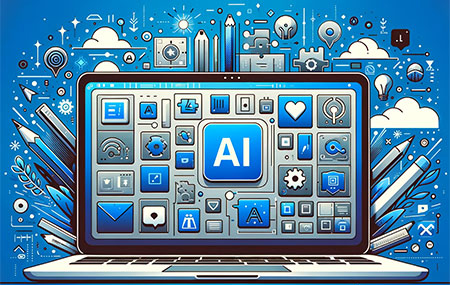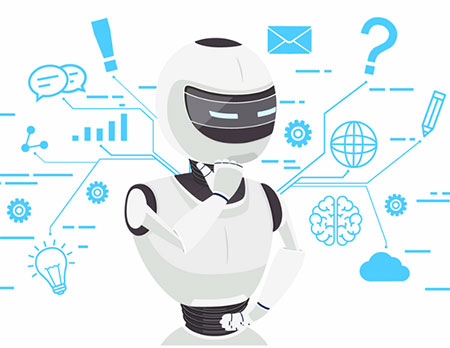Implementing AI in Schools: A Guide for Effective Assignments
Get Your Free Trial Now!
Implementing AI in Schools: A Guide for Effective Assignments
Artificial Intelligence (AI) is revolutionizing schooling with the aid of imparting revolutionary tools and possibilities for educators and college students. Integrating AI into schools can enhance the studying revel in and prepare college students for the future. One powerful way to leverage AI is through assignments that could be more effective for college students but also foster vital thinking and problem-solving competencies. Conducting a gap analysis of current assignments can help identify areas where AI can enhance effectiveness. This article will guide educators in enforcing AI in colleges through powerful assignments and effective gap analysis.
Understanding the Basics of AI
Before diving into AI assignments, educators need to have a fundamental understanding of what AI is and its applications. AI refers to the improvement of computer structures which can perform tasks that generally require human intelligence. Please familiarize yourself with the numerous branches of AI, consisting of machine learning and natural language processing, to incorporate them into assignments.

Identifying Learning Objectives
Define clear learning objectives for AI assignments. Whether it is developing coding abilities, understanding algorithms, analyzing real-world records, or aligning the targets with academic goals. AI assignments ought to no longer train technical capabilities but additionally encourage crucial questioning, collaboration, and creativity.
Selecting Appropriate AI Tools
Choose person-friendly AI tools appropriate for educational settings. Platforms like Google's Teachable Machine, Scratch, or Code.Org offer interactive and novice-friendly interfaces. These gear allow students to test AI concepts without the need for good-sized coding knowledge, making AI handy to a broader range of rookies.
Designing Engaging Assignments
Craft assignments that captivate students' hobbies and inspire exploration. For instance, college students can create AI-powered chatbots to answer common faculty-related queries or design predictive models for educational overall performance based totally on historical statistics. Real-world applications make AI assignments more engaging and applicable to students.
Encouraging Collaboration
Promote collaborative mastering through assigning institution initiatives. AI improvement regularly involves teamwork, as specialists with various capabilities collaborate to create comprehensive answers. Assignments that require college students to work together on AI projects foster verbal exchange, teamwork, and the sharing of thoughts.
Providing Guidance and Resources
Offer aid and resources to assist college students in navigating AI assignments. Provide tutorials, documentation, and instance initiatives to guide them via the mastering method. Encourage students to explore AI communities, participate in online forums, and try to find help while needed.
Assessing Creativity and Critical Thinking
Move beyond traditional evaluation methods by comparing creativity, essential questioning, and problem-solving talents. AI assignments should only be aware of partially correct or incorrect solutions; however, they also have to bear in mind the ideal procedures and progressive strategies college students take to clear up troubles.
Showcasing Real-international Impact
Connect AI assignments to real-international applications to emphasize their relevance. Discuss how AI is used in numerous industries, from healthcare to finance, and show off success testimonies. This facilitates students to understand the wider effect of AI and motivates them to use their information beyond the study room.
Why AI for Assignments?
 Personalized Learning
Personalized Learning
AI can understand and adapt to man or woman getting to know patterns. By studying a pupil's strengths and weaknesses, AI can tailor assignments to meet their specific needs. This customized method guarantees that scholars acquire focused help, permitting them to draw close standards at their own pace. Adaptive studying platforms powered by AI can generate assignments that engage students appropriately, selling deeper information about the challenge.
 Instant Feedback
Instant Feedback
One of the large blessings of AI in assignments is the availability of instantaneous remarks. Traditional strategies frequently contain a time lag between filing an assignment and receiving comments, hindering the studying manner. AI-powered systems can evaluate assignments directly, imparting actual-time remarks to college students. This immediate response no longer only enhances the getting to know to enjoy but also permits college students to deal with any misconceptions or mistakes promptly.
 Plagiarism Detection
Plagiarism Detection
Maintaining instructional integrity is a vital issue of training, and AI plays a pivotal role in ensuring the authenticity of assignments. Advanced plagiarism detection tools powered by AI can effectively scan and compare assignments against a substantial database, identifying any instances of plagiarism. This now not only promotes a culture of educational honesty but also allows students to broaden their crucial thinking and study capabilities.
 Enhanced Creativity
Enhanced Creativity
AI is not restricted to assessing factual information; it may additionally foster creativity in assignments. For instance, AI-powered gear can suggest innovative processes to troubleshoot or provide proposals for creative projects. By incorporating AI, assignments can grow to be a platform for college students to discover their innovative capabilities, adding dynamic details to the getting-to-know method.
Define AI and Its Relevance in the Educational Landscape
Personalized Learning
One of the considerable contributions of AI to training is its ability to facilitate personalized study reviews. AI algorithms analyze male or female scholar facts, which includes mastering options, strengths, and weaknesses, to tailor academic content. This personalized technique allows college students to examine at their own pace, ensuring a more powerful and attractive mastering method.
Adaptive Learning Systems
AI-pushed adaptive learning systems modify the difficulty level of instructional content material based totally on a scholar's performance. These structures perceive regions wherein a pupil can be struggling and, therefore, offer additional help or tasks. This adaptability promotes a customized studying route for every scholar, fostering a more inclusive and supportive educational environment.
Automated Administrative Tasks
Educational establishments take care of a sizable quantity of administrative duties every day. AI streamlines those techniques by automating obligations together with grading, scheduling, and statistics control. This permits educators to pay extra attention to coaching and mentoring students at the same time as reducing the executive burden.
Intelligent Tutoring Systems
AI-powered tutoring systems provide college students with on-call help and comments. These systems can simulate one-on-one interactions, assisting students in recognizing complex ideas and remedying problems. Intelligent tutoring structures contribute to better pupil comprehension and performance.
Data Analytics for Improvement
AI performs an essential function in accumulating and reading large amounts of statistics generated in educational settings. This information-pushed approach allows educators and administrators to identify tendencies, assess the effectiveness of coaching methods, and make informed selections to enhance the overall quality of schooling.
Language Processing and Translation
AI-driven language processing tools aid language learning by presenting actual-time translation and pronunciation help. This is especially useful for college kids in multilingual environments, fostering communique and expertise across various linguistic backgrounds.
Explore the Challenges in Traditional Assignment Methods
Lack of Real-global Application
One of the number one demanding situations with conventional project techniques is the frequently limited connection between the obligations assigned and real-international packages. Students find it tough to see the relevance of assignments to their future careers or daily lives. This disconnection can cause disengagement and a loss of motivation to invest genuine attempts into finishing assignments. To conquer this venture, educators can include more sensible, real-international eventualities in assignments.
One-length-suits-all Approach
Traditional assignments generally comply with a one-length-fits-all model, in which all college students are given the same task without thinking about their character strengths, pursuits, or studying patterns. This technique might not effectively cater to the numerous desires of college students, main to frustration, disinterest, or, in a few instances, educational underperformance. A more customized method for assignments, including differentiated training or adaptive studying, can deal with this project.
Limited Feedback and Collaboration
The remarks loop in traditional assignment methods needs to be more active and constrained. Students generally acquire grades and comments when they have finished and submitted their work, making it difficult for them to understand their mistakes and improve in real time. Additionally, conventional assignments generally lack possibilities for collaborative mastering, which is a crucial ability in an ultra-modern, interconnected global.
Assessment Bias
Traditional assignment techniques can also inadvertently introduce biases inside the evaluation technique. Factors such as handwriting, presentation style, or the ability to comply with a particular format may affect evaluators' perceptions of a pupil's work. This can result in an unfair evaluation and avert the correct assessment of a student's expertise and abilities. Embracing digital assessment equipment, standardized rubrics, and blind grading practices can help mitigate bias in the assessment method.

Highlight the Advantages of Using AI in Assignment Processes
Automated Grading and Feedback
One of the basic benefits of using AI in mission procedures is the capacity to automate grading and remarks. Traditional grading techniques are time-consuming and may be prone to human errors. AI can check assignments quickly and objectively, offering on-the-spot remarks to college students. This no longer most effectively hurries up the grading process; however, it additionally lets students receive timely insights into their overall performance, fostering a more responsive and dynamic learning environment.
Personalized Learning
AI algorithms have the functionality to analyze individual studying styles and preferences. By leveraging this information, educators can tailor assignments to match the specific desires of every pupil. Personalized getting-to-know stories no longer only beautify engagement but also optimize the getting-to-know curve, ensuring that students draw close standards more correctly. This adaptability is especially beneficial in heterogeneous school rooms where college students have diverse getting-to-know patterns and abilities.
Plagiarism Detection
In the digital age, combating plagiarism has become a crucial element of academic integrity. AI-powered plagiarism detection gear can test widespread databases to discover and flag times of plagiarism in student submissions. This no longer best guarantees the credibility of instructional checks; however, it additionally encourages a lifestyle of originality and intellectual honesty amongst students.
Data-Driven Insights for Educators
AI in undertaking methods generates valuable facts on pupil performance and mastering developments. Educators can harness this fact to gain insights into regions in which college students can be struggling or excelling. By reading those patterns, instructors could make informed decisions about academic strategies, perceive gaps inside the curriculum, and put in force-focused interventions to guide pupil fulfilment.
Enhanced Accessibility
AI tools can provide accessibility features that cater to various student needs. For example, AI can help students with unique studying requirements by presenting text-to-speech capability, language translation, or customizable interfaces. This inclusivity guarantees that educational resources are accessible to a broader range of students, fostering a greater equitable knowledge of surroundings.
Time Savings for Educators
The automation of habitual responsibilities, together with grading and records evaluation, frees up precious time for educators. This permits teachers to recognize extra complex and innovative elements of teaching, which include growing innovative lesson plans, engaging with students on a deeper stage, and refining coaching methodologies.
Benefits of Implementing AI in Assignments
Enhanced Efficiency
The automation talents of AI streamline the project creation and grading system, saving valuable time for both educators and college students. AI algorithms can determine assignments, grade them, and offer comments much quicker than conventional techniques. This efficiency allows instructors to pay attention to developing engaging content material and assisting college students in their mastering journey.
Data-Driven Insights
Implementing AI in assignments offers educators valuable insights into student performance. Analyzing the information generated through AI gear facilitates picking out tendencies and mastering gaps and regions that could require extra interest. Teachers can then use this data to evolve their teaching techniques, making sure that the curriculum aligns with the needs of the students.
Reducing Bias in Evaluation
AI-powered assessment gear attempts to put off bias within the grading system. By relying on objective algorithms, that equipment can offer truthful and unbiased reviews, regardless of character traits. This guarantees a greater inclusive and equitable educational environment.
Adaptive Learning Paths
AI can create adaptive studying paths based totally on the scholar's progress and performance. If a student excels in certain regions, the AI gadget can adjust the issue stage of assignments hence. Conversely, if a student struggles with specific principles, the machine can provide additional resources and help them seize up, ensuring a more customized learning experience.
Improved Resource Allocation
By automating ordinary tasks related to assignments, educators can allocate their time and resources extra correctly. AI can assist in identifying regions in which students want extra help, allowing educators to offer focused assistance and interventions. This optimized resource allocation blessings each student and teacher, enhancing the overall instructional revel in.
Conclusion

In the end, the implementation of Artificial Intelligence (AI) in faculties for powerful assignments marks a transformative step in education. As technology continues to boost, integrating AI gear into the getting-to-know environment not only enhances academic development but also equips college students with critical capabilities for the future.
The guide furnished serves as a precious, useful resource for educators, administrators, and policymakers to navigate the complexities of incorporating AI seamlessly into the educational framework.
By fostering a collaborative technique and addressing concerns, the schooling gadget can harness the capability of AI to create a more engaging, personalized, and efficient mastering of surroundings.
FAQs
How can AI be efficiently incorporated into faculty assignments?
The manual emphasizes a phased technique, starting with knowledge of AI fundamentals, observed through collaborative making plans, trainer schooling, and gradual implementation of AI gear tailor-made to particular topics and grade tiers.
What benefits does AI convey to the instructional panorama?
AI enhances personalized learning, provides real-time comments, automates administrative responsibilities, and promotes vital wondering and hassle-fixing talents among college students. It additionally permits instructors to recognize extra individualized practice.
Are there concerns concerning privacy, facts, and safety in enforcing AI in schools?
The guide addresses these worries by emphasizing the significance of adopting strong records protection measures, complying with privacy policies, and imparting clean tips on data usage and garages to ensure the safety of college students' statistics.
How can educators adapt to the converting position of generation in the classroom?
The guide recommends non-stop professional improvement for educators, promoting a growth attitude, and growing supportive surroundings that encourage experimentation with AI equipment, fostering a subculture of adaptability and innovation.
What is the function of policymakers within the successful implementation of AI in schools?
Policymakers play a critical role in supplying necessary sources, defining suggestions, and fostering a supportive coverage environment. The manual suggests collaboration among educators, policymakers, and industry professionals to create policies that align with instructional desires and make certain equitable access to AI sources for all students.